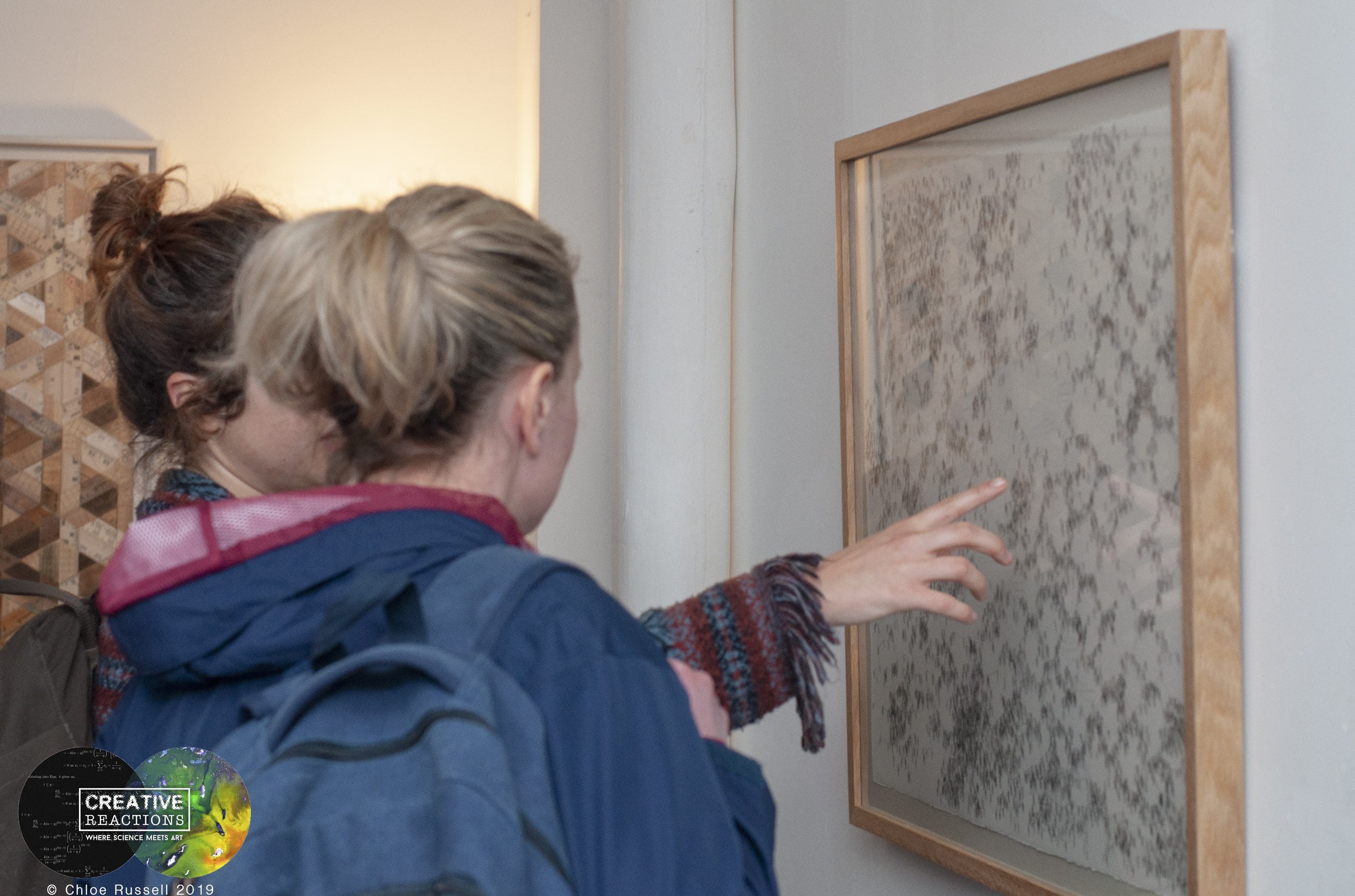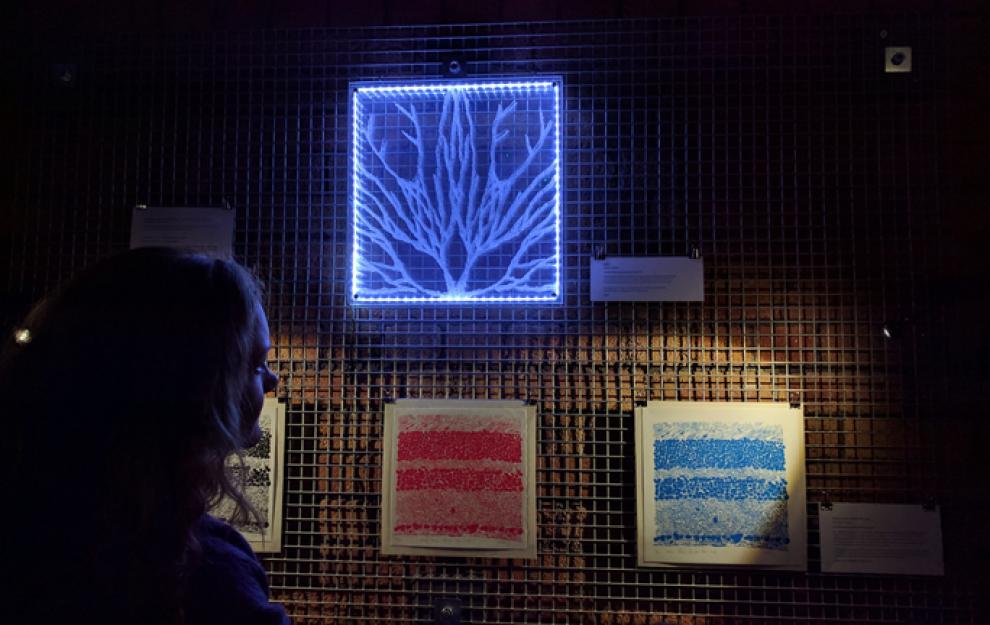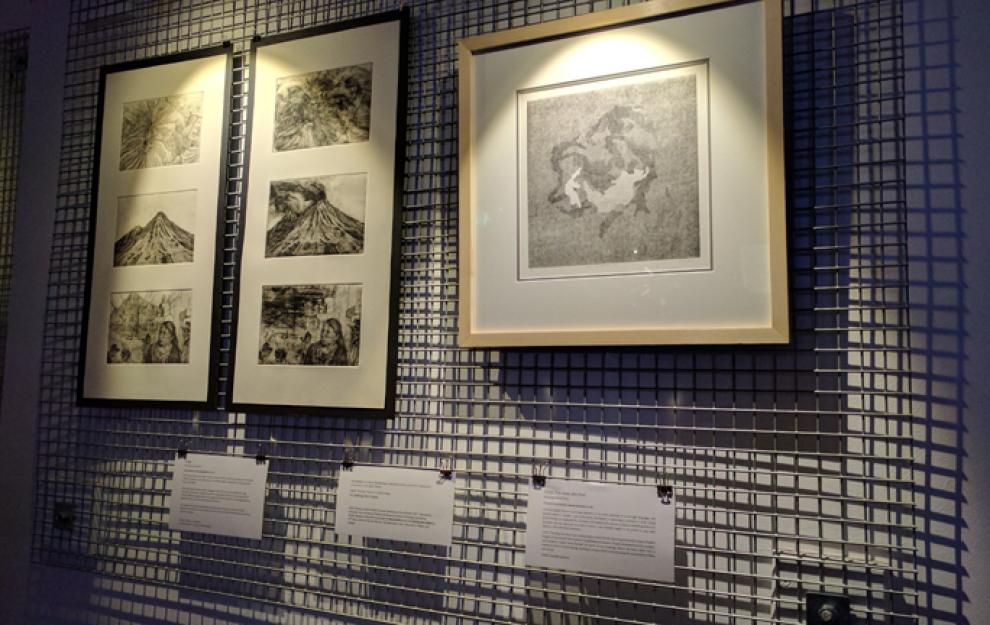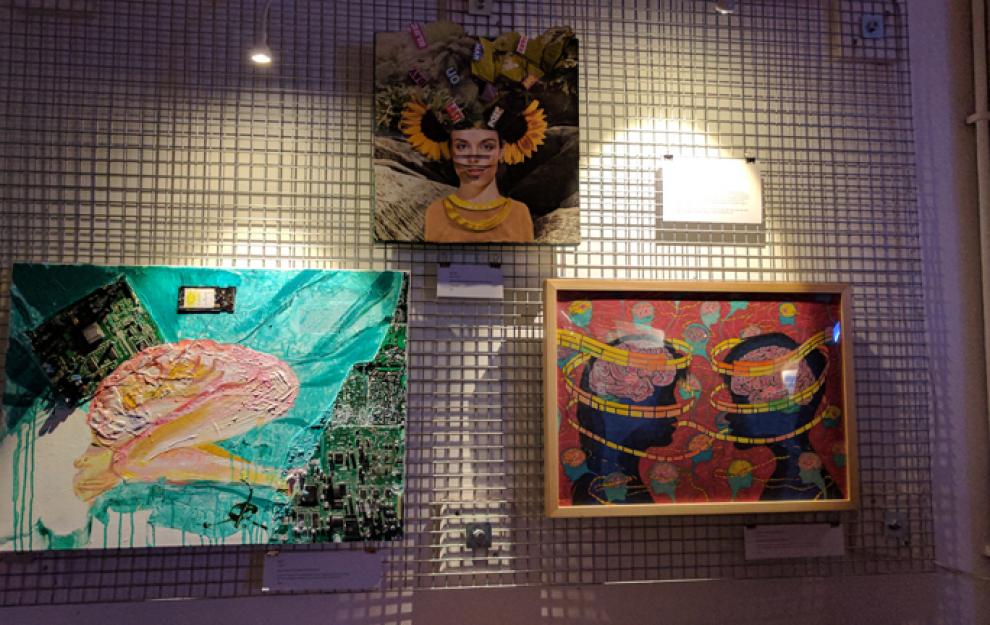Exhibitions
We work with researchers and artists
to create engaging and interactive exhibitions.
Our exhibitions aim to provide audiences with a unique way to approach and interact with research and art. Each exhibition aims to work with a different audience. Whether it's school children, independent adults, or a pub we want to deliver exhibitions for people underserved by research and the arts.
We have worked with researchers from the Universities of Bristol, Bath, and West of England. Their research is broad and stretches from ethics and policy all the way down to the molecular level of genes and proteins.
The artists we work with are mainly from Bristol, but includes creatives from across the South West and furtehr afield. We have worked with artists from as far away as Germany and Italy. Their media and practices vary widely from acrylic and stained glass to stone masonry and film.
Our exhibitions are funded by contributions from researchers and University departments as well as numerous grants awarded by many funders: The Medical Research Council, The MRC Integrative Epidemiology Unit, The Engineering and Physical Sciences Research Council, The Biochemical Society. We are fortunate to have been supported by the University of Bristol Widenining Participation and Outreach offices as well as the Alumni Foundation. Funding from I'm a Scientist helped to establish CREATE-REACT
We are always interested in working with new partners, whether thats to explore research and build engaging stories or to further creative practices and expand into new domains.
Feedback
In 2017 we held our first exhibition at the Greenbank Pub in Bristol. This pilot project worked with approximately 15 artists and researchers. With roughly 500 visitors, the exhibition was well received though the lack of variety of artistic media and reseacrh (much of the research was biomedical) was noted.
In 2018 we expanded the project and built on the feedback of the 2017 exhibition. A total of 35 artists and 35 researchers took part producing 31 artworks. The exhibition was held over 10 days and included weekend activities for children and a partnership with Rising Ape to deliver an event for adults.
Feedback showed an improvement on the previous year with the variety of artistic media and research of particular note. Additional positives included the space and the information on each artwork. Information on each artwork included descriptions from the artist and researcher. Feedback from artists and researchers was incredibly positive with many wishing to have spent more time with their partners working to produce the works.
In 2019 we expanded the project once again, increasing the number of artist and researcher pairs to 50. The resulting art works were displayed for two-weeks first in a co-working space on a busy high street and after then at a gallery in the centre of Bristol for a further two-weeks.
Feedback was much improved on the previous two years with many more visitors and respondents to our evaluation. In line with previous years 96% of people wanted to see more collaborations between artists and researchers. Though we had tried to select artists and researchers who would commit mor etime to the project than in previous years, feedback from both highlited the desire to spend more time with the collaborators. Visitors said the exhibition stimulated their interest in research and that as a reuslt of seeing the art works they would read more about research. All were critical of the space and the advertising.








